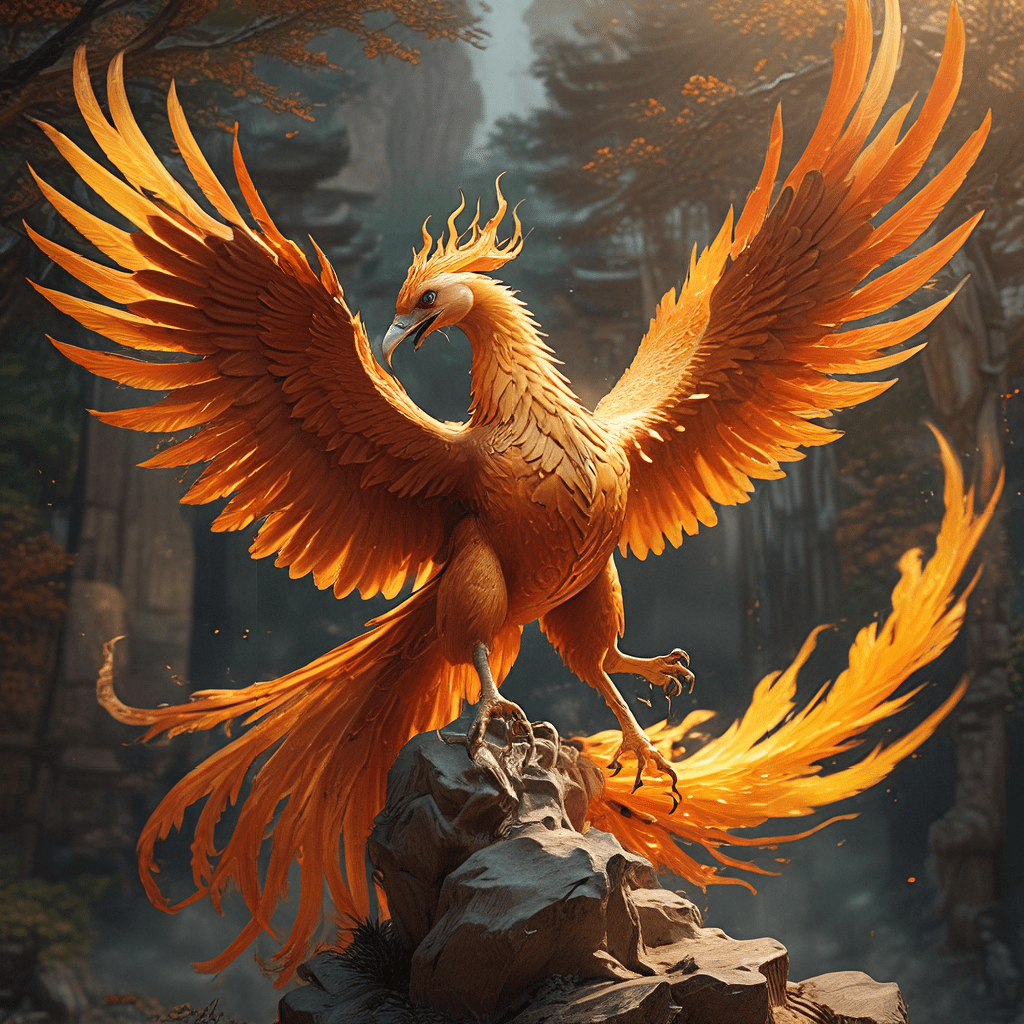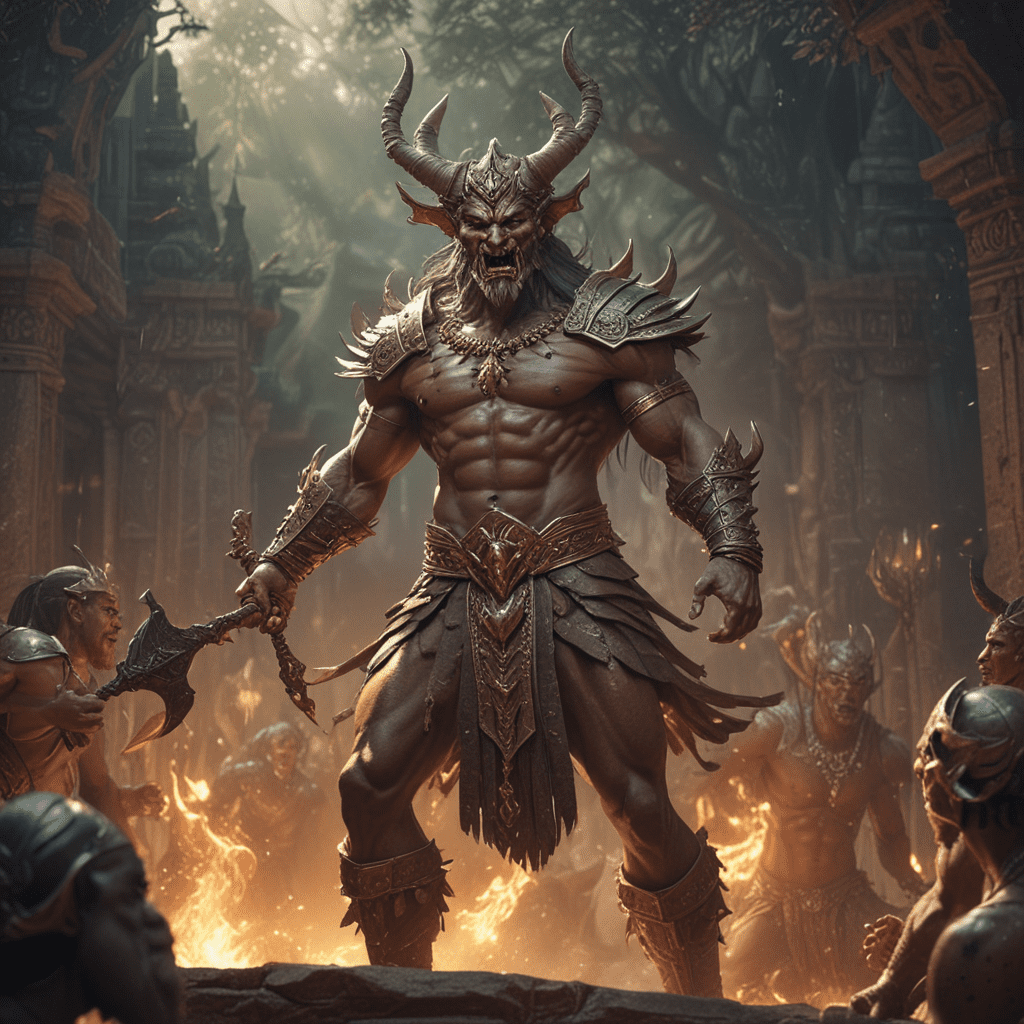The Phoenix in Korean Mythology: A Bird of Rebirth and Renewal
The phoenix, a majestic and mythical creature, holds a special place in Korean folklore, symbolizing hope, renewal, and the enduring power of the human spirit. The phoenix, known as bong-hwang in Korean, is a legendary bird that embodies the cyclical nature of life and death. It is a symbol of transformation and rebirth, rising from the ashes of its own demise to begin a new life cycle.
Like its counterparts in other cultures, the Korean phoenix is a creature of incredible beauty and grace. It is often depicted with vibrant, multi-colored feathers, representing the spectrum of life's possibilities. The phoenix's wings are said to be adorned with intricate patterns, signifying its connection to the celestial realms.
It is a creature of great power and grace, soaring through the heavens on its majestic wings, carrying the hopes and aspirations of those who believe in its magic. The phoenix is more than just a mythical creature; it is a symbol of hope and resilience, reminding us that even in times of adversity, there is always the potential for renewal and rebirth.
A Symbol of Hope and Longevity
In Korean culture, the phoenix holds a significant position, representing hope, longevity, good fortune, and prosperity. It embodies the concept of hwang-geum, which translates to "golden age" and refers to a time of peace, abundance, and flourishing.
The phoenix is believed to appear only in times of great peace and harmony, bringing with it a golden age of enlightenment and prosperity. Its presence is seen as a sign of divine favor, a reminder that good will always triumph over evil.
The phoenix's association with longevity stems from its ability to rise again from the ashes, symbolizing an eternal cycle of life and renewal. The phoenix's long life is a testament to its enduring spirit, reminding us that life is a journey, and every season brings with it new possibilities.
The Mythological Origins of the Phoenix
The mythical origins of the phoenix are deeply rooted in the ancient Korean belief system. It is said that the phoenix was born from the flames of a sacred tree, a symbol of the cyclical nature of life and death. The phoenix's ability to rise from the ashes is a metaphor for the enduring power of the human spirit, the ability to overcome adversity and emerge stronger than before.
Early Korean myths and legends tell of the phoenix appearing as a messenger from the heavens, bringing with it messages of hope and enlightenment. It was believed that the phoenix had the power to heal the sick, bring good fortune, and protect those who believed in its magic.
The Phoenix in Korean Folklore: A Brief Overview
The phoenix appears in numerous Korean folk tales and legends. It is often depicted as a wise and benevolent creature, protecting those who are lost or in need. In one popular tale, a phoenix guides a lost traveler through a treacherous forest, offering its wisdom and guidance along the way. The phoenix acts as a symbol of hope and redemption, reminding us that even in the darkest of times, there is always light at the end of the tunnel.
The phoenix is also a recurring theme in Korean art and literature. It is often depicted as a symbol of royalty, power, and divine favor. The phoenix's majestic presence is a reminder of the strength and resilience of the Korean spirit.
The Phoenix in Korean Art and Literature
The phoenix, as a potent symbol, has made its way into numerous forms of Korean art and literature. It features prominently in ancient Korean paintings, often depicted in vibrant colors that evoke its legendary beauty. The phoenix is frequently portrayed alongside other mythical creatures, such as the dragon, symbolizing the balance of opposing forces in the universe.
In Korean poetry, the phoenix is a source of inspiration, representing beauty, grace, and the enduring power of the human spirit. Poets often use the phoenix as a metaphor for transformation, rebirth, and the cyclical nature of life. The phoenix's image is woven into the fabric of Korean literature, reminding us of the enduring power of myths and legends to inspire and uplift us.
The Phoenix as a Representation of the Korean Spirit
The phoenix, as a symbol deeply embedded in Korean culture, reflects the spirit of the Korean people. It symbolizes their resilience, perseverance, and ability to overcome adversity. The phoenix's ability to rise from the ashes serves as a constant reminder that even in the face of hardship, hope and renewal are always possible. The phoenix embodies the Korean spirit's unwavering optimism, a belief that even in the darkest of times, brighter days are ahead.
The Phoenix as a Symbol of Royalty and Power
The phoenix, with its majestic appearance and mythical powers, has long been associated with royalty and power in Korea. It is often depicted as a symbol of the king's divine right to rule, representing his wisdom, strength, and benevolence. The phoenix's association with the king further reinforces its connection to good fortune, prosperity, and a harmonious society.
The Phoenix and the Cycle of Life and Death
The phoenix's ability to rise from the ashes is a powerful metaphor for the cyclical nature of life and death. It embodies the concept of rebirth, reminding us that life is not linear but rather an ongoing cycle of transformation and renewal. Even as we experience loss and endings, there is always the possibility of something new emerging from the ashes of the past.
The Korean phoenix's story is a reminder that death is not an end but a transition, a chance for a new beginning. Its cycle of destruction and rebirth is a reminder that life is a journey, and even as we face challenges and losses along the way, there is always the potential for growth, healing, and renewal.
The Phoenix and the Concept of Transformation
The phoenix's transformation from ashes to a magnificent bird is a powerful symbol of the transformative nature of life. It reminds us that we are capable of growth, change, and renewal. Obstacles and challenges can be seen as opportunities for transformation, a chance to shed old patterns and embrace new possibilities.
The phoenix encourages us to embrace the transformative power of life, to view challenges not as setbacks but as opportunities for growth and evolution. It is a reminder that we are never truly stuck, that we have the power to change and become something new and better.
The Phoenix as a Source of Inspiration and Mystery
The phoenix, a creature of myth and legend, continues to spark our imagination and inspire us to dream beyond the ordinary. Its mysterious nature and incredible powers make it a captivating symbol, reminding us of the vastness and wonder of the world around us.
The phoenix's enduring legend is a testament to the power of stories and myths to inspire, teach, and uplift us. Its story reminds us that even in the face of adversity, hope, renewal, and the power of the human spirit are always present.
FAQ
What is the Korean word for phoenix?
The Korean word for phoenix is bong-hwang.
What does the phoenix symbolize in Korean culture?
The phoenix symbolizes hope, longevity, good fortune, prosperity, and the enduring power of the human spirit in Korean culture.
What is the mythical origin of the phoenix in Korean folklore?
According to Korean mythology, the phoenix was born from the flames of a sacred tree.
What role does the phoenix play in Korean art and literature?
The phoenix is a recurring theme in Korean art and literature, often depicted as a symbol of royalty, power, and divine favor.
How does the phoenix represent the Korean spirit?
The phoenix symbolizes the resilience, perseverance, and ability of the Korean people to overcome adversity.



